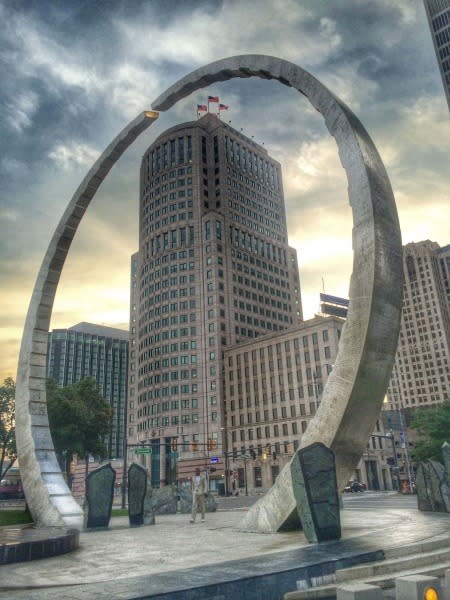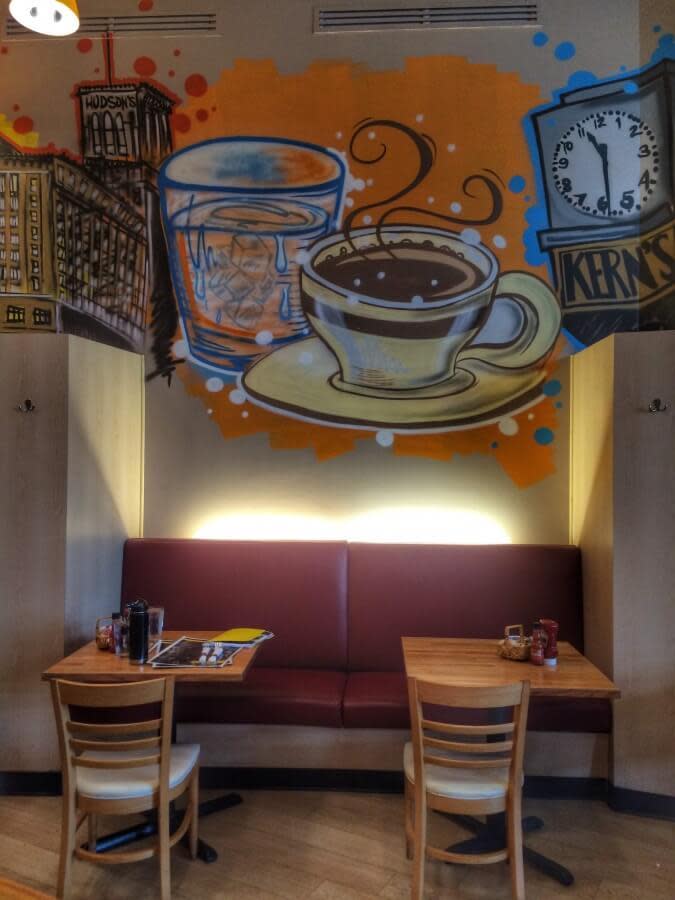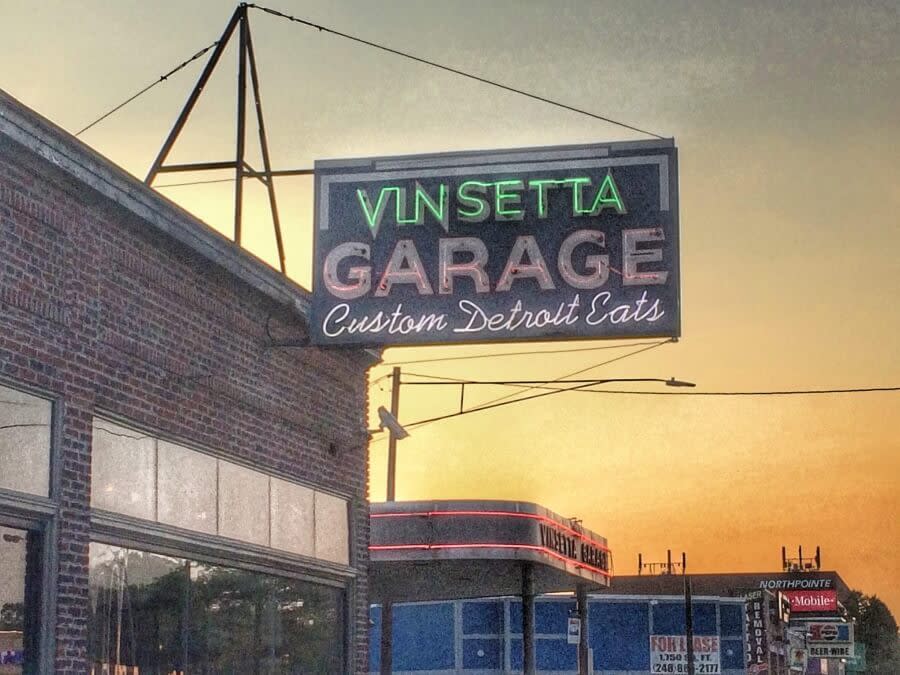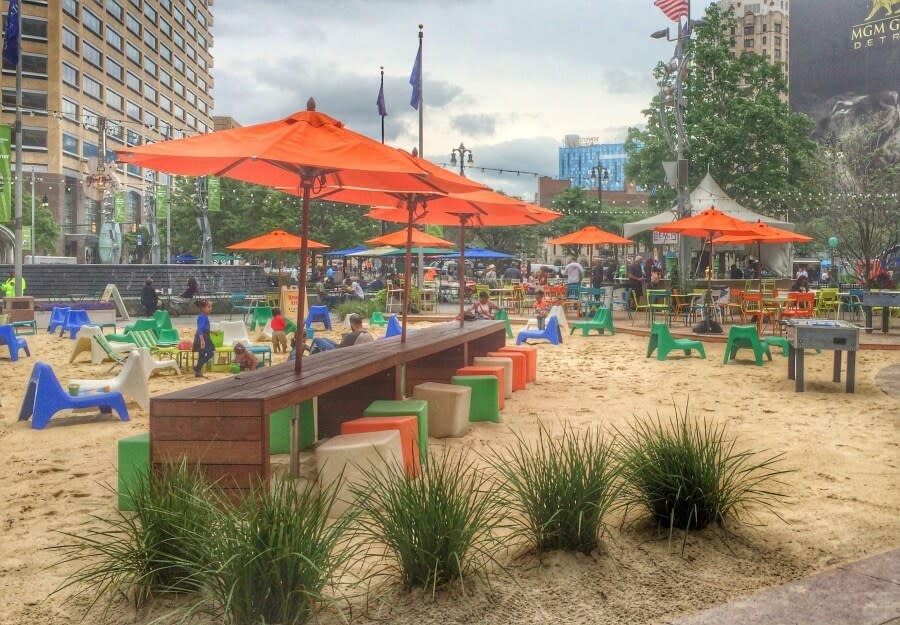10 Things that will change your mind about Detroit

Detroit is on the rise, and there are plenty of exciting reasons to visit now. (Photo: Catch Carri)
By Carri Wilbanks / Catch Carri
It’s hard to think “Detroit” and picture green urban spaces, organic coffee shops, and gourmet restaurants, but the Motor City is undergoing a revitalization that could put it on the map as a hip city to visit this year. Though the city has suffered culturally and financially through the years, entrepreneurs and young professionals are slowly moving back and sparking positive change in the community. Here are ten reasons to put Detroit on your travel list right now:
1. The coffee scene could soon rival Portland’s.

Great Lakes Coffee Roasting Company has been pouring organic, small-batch joe since 1999. (Photo: Catch Carri)
Coffee lovers can get their fix at Great Lakes Coffee Roasting Company, an organic, small-batch coffee company located in a Midtown building that’s constructed mostly out of materials reclaimed from a demolished East Side Detroit home. A rotating menu of freshly roasted micro-lot, single-origin coffees are served throughout the week, but Great Lakes’ commitment to quality never changes — the business philosophy focuses on small-scale production, traditional techniques, and quality taste. Insider tip: try the cold-brewed coffee on draft.
Located right across from Campus Martius Park, Roasting Plant is further evidence that good coffee might be fueling Detroit’s renaissance. The modern shop takes the science of coffee seriously, and beans are roasted fresh in-house every day. While there’s no denying that the coffee is strong and delicious, the real reason people keep coming back is probably the novelty ordering process. Once you pick which coffee you want, the beans are vacuum pumped through clear tubes, shooting right from the roaster to the brewer. It gives the place an industrial mad-scientist vibe and draws coffee connoisseurs back again and again.
Related: 10 Best U.S. Cities to Visit with the Kids

When you order at Roasting Plant, you’ll watch your beans shoot from their containers into the roaster. (Photo: Catch Carri)
2. The food is delicious.
Serving arguably the best breakfast in Detroit, The Hudson Café opened in 2011 when owners Tom Teknos and Stavros Adamapoulos saw the city revitalizing. Their prediction paid off. Today, hungry patrons typically have to wait for a table on weekend mornings, though most agree: It’s worth the extra time just to get a bite of the spot’s famous red velvet pancakes ($9), which are drizzled with cream cheese and dusted with cocoa powder. Other popular items on the menu include the Very Berry Stuffed French Toast ($9.50) stuffed with banana cream cheese and topped with fresh berries, and the Voodoo Eggs Benedict ($9.50) made with corn cake, chorizo, cheddar, and a special house ranchero sauce that takes three hours to make.

Vinsetta Garage is the oldest garage east of the Mississippi — today it dispenses comfort food instead of tune-ups. (Photo: Catch Carri)
After 91 years as an auto repair shop and hot rod hangout, the well-known Vinsetta Garage on Woodward Avenue was overhauled in 2011 by investors who converted the building into a destination restaurant. While it looks mostly the same on the outside, complete with gas pumps and garage doors, the interior is now a very cool dining scene where patrons enjoy comfort foods like disco fries ($6.95), coal-fired bread sticks ($5.95) and hearty burgers ($12.95–$14.95).
In the early 1900s, Greektown, located northeast of downtown along Monroe Avenue, was home to a large population of Greek immigrants and today the neighborhood is still known for its plethora of Greek restaurants, a few of which are still Greek-owned. The area has become a popular district for tourists and city residents alike, thanks to a casino, buildings modeled after Greek architectural icons like the Parthenon, and live music on summer nights. For cheap Greek eats, try Plaka Cafe, a diner-style restaurant serving Mediterranean dishes such as gyros and kebobs alongside American staples like burgers and French toast.
Related: Foodie Bucket List: 12 Iconic Restaurants Worth Traveling for
3. Downtown is thriving.

In the summer, Camp Martius Park is an urban beach; in the winter, it’s an ice-skating rink. (Photo: Catch Carri)
Located smack dab in the middle of downtown Detroit, Campus Martius Park is a small but bustling public oasis that, since opening in 2004, has brought much-needed greenery and pedestrian traffic to the area. Today there’s always something going on: performances, a bar, yard games in the summer, an ice rink in the winter. The park, which was a drill ground for the militia in the 1700s, has become a favorite hangout for nearby office workers at lunchtime. In fact, the park itself has served as a catalyst for new construction — condominiums and new office spaces have sprung up here over the past few years.
4. The art scene has history, and a future.

Tyree Guyton started turning junk into art back in 1986. Now his two-block installation is a popular tourist spot. (Photo: Catch Carri)
The Heidelberg Project is an outdoor art project that began in 1986 when artist Tyree Guyton returned to Heidelberg, the street where he grew up on Detroit’s East Side, and found vacant lots filled with trash, abandoned cars, and homes in shambles. Hoping to transform the neighborhood and improve the community through art, Guyton began collecting the debris and turning trash into wacky and wonderful art projects. Today, the neighborhood, which is one of the most economically depressed in the country with unemployment rates of 75 percent, receives 275,000 annual visitors interested in checking out Guyton’s creations, like a colorful polka dot house and controversial pieces protesting everything from radiation to the tobacco industry and even Santa.
Guyton’s quirky project is just one aspect of Detroit’s growing art scene. Artists from all over the country have been migrating here over the past few years, taking advantage of raw space, cheap rent, and the lure of a city on the cusp. In one notable example, Brooklyn’s Galapagos Art Space — which had moved into that city’s up-and-coming Williamsburg neighborhood 20 years ago — made news when its owner decided to relocate to Detroit. And why not? Detroit boasts two top-notch art schools, Cranbrook Academy of Art and College for Creative Studies and is home to one of the most underrated museums, the Museum of Contemporary Art Detroit. It’s an art mecca waiting to happen.
Related: The 10 Best Museums in the World on TripAdvisor

The Anna Scripps Whitcomb Conservatory on Belle Isle opened in 1904; it houses a collection of orchids and other plants. (Photo: Catch Carri)
5. There’s a green oasis in the middle of the river.
For Detroiters seeking a bit of natural beauty, Belle Isle is a 987-acre island park in the middle of the Detroit River, complete with three lakes, a wooded area, and beautiful views of the skyline. Inside, find a zoo, conservatory, golf practice facility, aquarium, and maritime museum. On a nice weather day, families can escape the urban environment and enjoy a picnic on Detroit’s only public beach followed by a ride down a giant slide, which certainly isn’t for kids only.

The Depot Museum is located in the actual depot where Thomas Edison worked as a news reporter from 1859 to 1863. (Photo: Catch Carri)
6. The city’s history (and soundtrack) is fascinating.
Thomas Edison’s childhood home was in Port Huron, Michigan, and now the Thomas Edison Depot Museum tells his life story through exhibits, live presentations, and hands-on interactive experiences. The museum is inside the historic Fort Gratiot depot, which was built in 1858 and once served as a connection for trains carrying people and freight between Port Huron and Detroit — it was also the office where the young Edison worked as a news reporter. A restored baggage car rests on a track outside the depot, where visitors can see a re-creation of young Edison’s mobile chemistry lab and print shop.
The three-story Detroit Historical Museum is the perfect place to immerse yourself in the history of the Motor City. The first level represents what the city’s streets have looked like over time, while on the second level visitors can see part of an automobile assembly line in action and even sit in a Model T. The museum’s exhibits also cover Detroit’s contributions to WWII, and the city’s period of innovation following the war that gave way to many of the modern items we use every day. It’s free to enter and provides interesting historical context for many of the other sights visitors will see in Detroit.
And of course, Detroit is where Motown began, so you’ll find a ton of historic music venues here, several of which have hosted many a famous name throughout the years, from jazz and blues to hip-hop. Eminem got his start at The Shelter, and Ella Fitzgerald, Miles Davis, and Louis Armstrong all played at Baker’s Keyboard Lounge. There are many more live-music spots to choose from, but a good place to start is at the Motown Museum, where you can stand in Studio A and relive the moments that made Detroit the home of Hitsville USA.
WATCH: 10 Years Post Katrina, NOLA’s House of Dance & Feathers Dances Back to Life
Let Yahoo Travel inspire you every day. Hang out with us on Facebook, Twitter, Instagram, and Pinterest. Check out our original adventure travel series A Broad Abroad.

